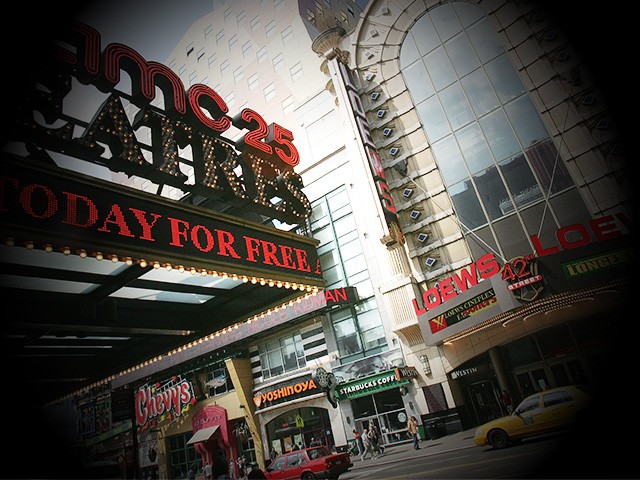Can five titles — It, Kingsman: The Golden Circle, Star Wars: The Last Jedi, Justice League and Thor: Ragnarok — save Hollywood? Because it ain’t just the summer stinking up the 2017 box office. After a dismal second quarter, the third-quarter box office is expected to collapse -21% when compared to last year. That is six months of fail, folks — and now theater chain stocks are crashing, even as the stock market itself enjoys a bull market.
With 11,873 screens in 1,009 theaters, AMC Entertainment is the single largest theater operator in America and — are you ready for this? — its stock price has collapsed a whopping -45% since Memorial Day. Two other monster chains, Regal and Cinemark, have seen their stocks drop by -28% and -18%, respectively. Even Imax, one of the pillars (along with 3D) of the premium pricing schemes that have kept the box office looking relatively good these past few years, saw a -31% drop in the price of its shares.
Is Hollywood in real trouble?
Is this a bigger problem than just one lousy year?
Well, so far, the smart money says yes. Investors have lost an enormous amount of confidence in the movie exhibition business. On the other hand, Regal Cinemas put its money where its mouth is and purchased $50 million of its own stock. This is an act of faith that tells investors that Regal believes its shares are a good investment, that they are now artificially low and will improve over time.
In his reporting on all of this, The Hollywood Reporter’s Paul Bond mentions PVOD, or what’s known as Premium Video On Demand; a service that allows movie fans to pay a premium price of about $30 to watch a movie at home almost immediately after its theatrical release. In the past, the big theater chains have fought desperately to kill anything that shrinks the window of time between when a movie is shown in theaters and when consumers can watch it in the comfort of their own homes.
The fear, obviously, is that the smaller the window, the less incentive people have to go to the local cineplex. And that fear is such that these theater chains have gone so far as to threaten to boycott any movie used for a PVOD experiment. For example, back in 2011, Universal wanted to use the Brett Ratner comedy Tower Heist as a test case. The idea was to PVOD the title for $60 just three weeks after its theatrical release. To strangle this idea in its crib, theater owners banded together in a boycott. Unless the PVOD rollout was cancelled, they refused to exhibit the film. In other words, Tower Heist would have no theatrical release. The boycott threat worked. The test was scrapped.
Much has happened over the last six years, though.
The existential threat of PVOD is, I think, what is probably most affecting these theater chain stock prices. If the major studios cannot make enough money through theatrical exhibition, not only are they going to turn to other sources of revenue, the boycott threat will fall on deaf ears. Studios are going to do whatever they can to improve revenue, and if this means trying out an entirely new business model, so be it.
According to THR, a comparison of each studio’s top 20 grossing movies reveals that, year-over-year, Paramount’s revenues are down -27%, the supposedly infallible Disney is down -23%, Twentieth Century Fox is down -17%. Those kinds of numbers breed a certain kind of corporate desperation that just wasn’t there in 2011.
Viewing habits have also changed dramatically over the last six years. Thanks to streaming and other forms of online video, we are becoming a culture that wants to watch what we want to watch and how we want to watch it. This is especially true for the young people, the very demographic that butters Hollywood’s bread.
PVOD would hit this demographic sweet spot in two ways: 1) Expense-wise, when you look at ticket and concession prices, a $30 PVOD buy is cheaper than a trip to the movies. 2) The shorter the home video release, the less money the studios have to pay to advertise. Instead of having to fund a second promotional campaign for the home video release, a 3 week window means the buzz from the theatrical release will still be in the air.
Overall, though, the studios, the critics, the trades… they all write, talk, and spin around Hollywood’s real problem. For the most part, movies today suck. Hollywood’s ideological conformity has already alienated half the country and the other half is justifiably wary of forking over $30 — in a theater or through PVOD — to gamble on a product with a disappointment rate upwards of 80%.
Follow John Nolte on Twitter @NolteNC. Follow his Facebook Page here.
